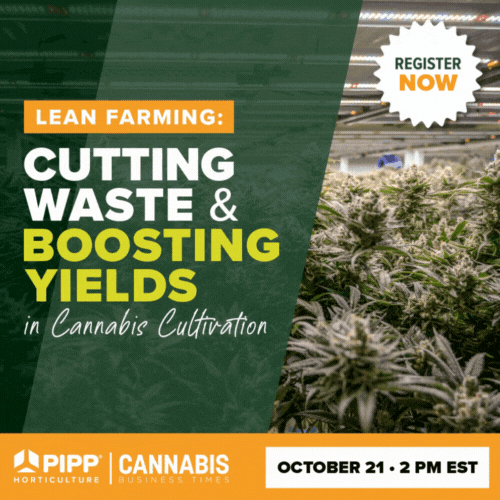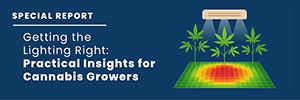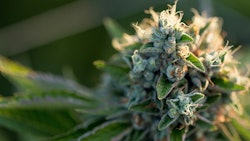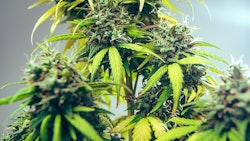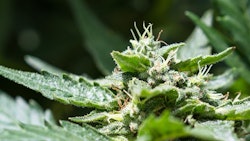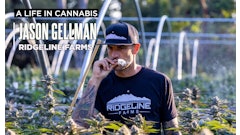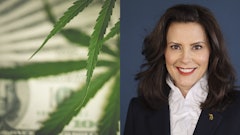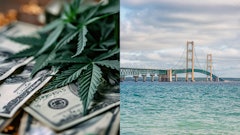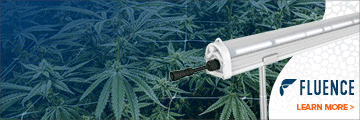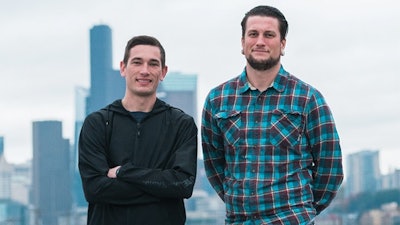
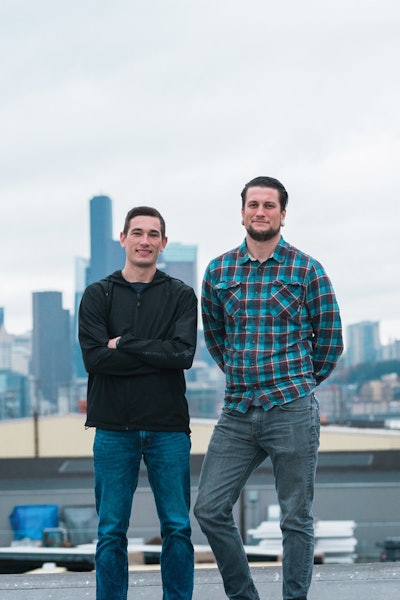
Sometimes in life, it is the little things that make the biggest difference, the simple things that provide the most satisfaction. Just ask Alex Cooley.
Cooley is the co-founder of the cannabis cultivation company Solstice in Seattle, Wash. In 2014, Solstice finished construction of a state-of-the-art, indoor production facility, complete with new LED technology, a hydrocarbon extraction lab and remote access to grow room controls. It was a technophile’s dream. But Cooley’s favorite part? “I really love that we have parking now. And I love our new conference table.”
This is Cooley’s practical nature on display. Solstice may be a three-time DOPE Magazine Washington Grower of the Year award-winner, but Cooley isn’t resting on his laurels. If he sees something that needs doing, he does it. For example, when zoning restrictions prevented Solstice from making Seattle’s SoDo neighborhood its home in 2011, Cooley worked with Seattle lawmakers to rezone the district to allow for cannabis businesses instead of looking to a new city.
In this interview, Cooley, along with Solstice Director of Operations Max Salinger, explain how to fight zoning restrictions, why Solstice is working with the state to create an organic cannabis certification and how the company’s internal product rating program works.
Scott Guthrie: Alex, in 2011 you worked with the City of Seattle to create new zoning for cannabis businesses. What advice would you give to other businesses looking to rezone their communities?
Alex Cooley: You can go help create the legislation, code and ordinances in a place that doesn’t want you, but it’s not sustainable. Eventually the pendulum will swing back. So, the biggest tip is working with people who want to work with you. We made our home in Seattle, particularly SoDo, where we worked on the zoning for the last six years. I think I’ve helped to write almost a dozen ordinances in Seattle. We are grateful to the city of Seattle for being a partner. It makes it much more sustainable to have that support.
In addition, it’s good to be on the right side of things. We’re in SoDo because it’s the right fit. It’s an industrial district. It’s where our type of businesses occur, where odor occurs, where trucks are moving around. It is important to do it where it makes sense.
This is a bit of the problem with our current system of government. The fact is, if you do the work for them, you get a lot of what you want. I had little to no understanding of zoning, and I’ve worked hard to become educated about that. Then I worked hard to write ordinances for them, and we got what we wanted. That’s how we ended up building the first-ever fully permitted cultivation facility in the state of Washington—we became educated, we worked with people who wanted us and we did the work for them.
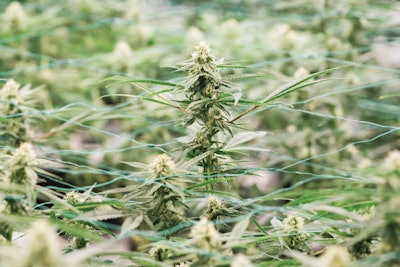
Guthrie: In 2014 Solstice built a new, state-of-the-art facility. What are your favorite parts about the facility?
Max Salinger: There are two parts to this. The first being cool, new technology. In that sense, one of my absolute favorites would be the LED technology that we’ve been testing. We do all our vegetative production under LEDs. The speed at which LED technology has been advancing, and the way that we’re able to manipulate not only spectrum, but photoperiod and intensity at different levels is exciting for me.
But some of my favorite equipment that we use is standard agricultural equipment that isn’t necessarily applied specifically to cannabis. For one, our nutrient injection systems. We are currently using a hydroponic system that has the capacity to run acres of greenhouse, but we scaled it down to where we can do individual zoning irrigation within our indoor grow and make larger batches of fertilizer that we can customize for individual strains. Seeing a lot of the technology that I’m familiar with from my background in the tomato industry and lettuce industry being applied to cannabis is awesome.
Cooley: I love all the cool stuff that we have, but to Max’s point, some of the luster fades because it’s not new and incredibly inventive. We make distillate and do fractionalized distillation. That’s super cool, but that wears off quickly once you realize, “Oh, that’s technology from the 1890s, and it’s not really new and novel.”
Salinger: We also have a lot of remote-access stuff. My fiancée gets sick of it. I can’t tell you the times I’ll be lying in bed, scrolling through all the grow room environmental control data. It’s not new technology, but it’s fun and very useful.
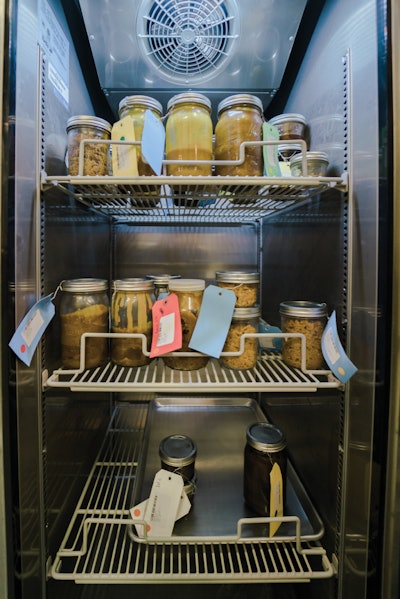
Guthrie: Solstice has been asked to join the Organic Certification Board, which will help the Washington State Department of Agriculture create an organic certification program for cannabis. Why is it important to have this program and what needs to happen for it be successful?
Salinger: In normalizing cannabis, we have to start treating it like an agricultural crop. That’s what it is. We are farmers. We’re trying to make this a crop. Our goal is to make this a crop that is a standard, not something that is treated differently solely because it’s cannabis.
When you look at organic certification, it’s one of the No. 1 ways—whether it’s a small farmer or a farmer looking to diversify—to differentiate their products and create an identity around the type of farming that they do. One of the things that was important when we were talking about the barriers and the legislation revolving around this type of program was: How do we align the organic cannabis certifications to the food industry certifications in a way that epitomizes the term “organic”? That is, reduced pesticide usage, reducing environmental impact and a generally safer product. Being able to get that certification is a huge step in cannabis. It’s what needs to happen for cannabis to be taken seriously.
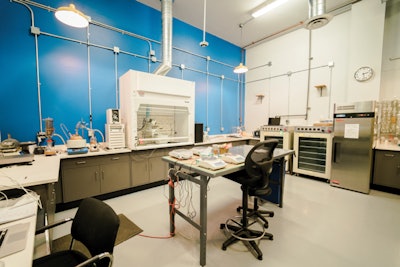
Guthrie: Every batch goes through your internal rating program and receives a score. How was this program designed, and what types of scores are you giving out?
Salinger: The IR [internal rating] program is a dynamic rating scale that’s based on visual, olfactory and aesthetic appeal of each batch. We have a team that will rotate through every single strain of cannabis that is going to market. We’re grading every single product and using that to help us determine the appropriate brand to place it in, and to catalog how this plant performed in this environment, how this plant performed under certain conditions. It shapes a lot of what we grow.
The team is between 10 and 15 people. Everyone will look at the product under a microscope. They give the products fairly subjective scores based on questions such as: How does this look to you? How is this trimmed? Are you seeing anything in here that you like? What’s the color appeal? We combine that with the state-mandated testing, as well as some secondary testing that we’ll do for terpene profile, potency and moisture content. That gives us a numerical score of zero to 100.
We have a scoring standard for four particular brands we supply. Swamp Boys and Solstice are the top tiers. Nothing below that is going to get into those brands. ... If the material doesn’t reach our lowest scoring threshold, it is turned into extract or wholesaled.
Guthrie: Solstice works with some externally sourced genetics. How do you determine what external genetics make it into your facility and how do you find them?
Cooley: We’ve always run an R&D program where we’re essentially looking for a varietal of cannabis that doesn’t cover things that we currently offer. We’re trying to identify what’s popular and what we don’t have. That’s why we partnered with Swamp Boys for “Nookies”: a Nigerian and Animal Cookies cross. We didn’t have a landrace sativa—let alone an African landrace sativa—that had been crossed with an incredibly popular strain. We started working on it in 2015 and completed it in 2018. So, we overlay those Venn diagrams of what we’re missing, and then we move forward.
I’d always spent a lot of time collecting varietals and seed collecting. I scoured the earth to get original Durban Poison seeds that are non-feminized. We’ve got three different Skunk No. 1’s. We put money into tissue culture and pollen saving. So, we’ve got a pretty extensive library that we can use to create what’s popular.
Salinger: That’s the fun part from my standpoint. Alex put in all this work at the beginning, and it got our stock established early. Now, it’s really experimentation into: What is going to produce well, what is going to perform well in our unique environment and what is that end score going to be?
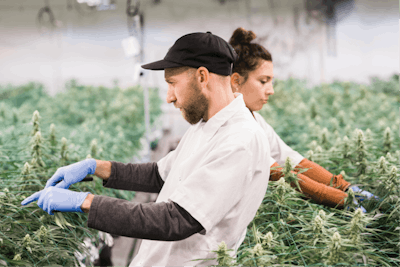
Guthrie: You have a hydrocarbon extraction lab. What was the most challenging part of designing the lab?
Salinger: We are within Seattle city limits, so there were a lot of regulations set by the Liquor and Cannabis Board (LCB), our governing body. We went through multiple inspections with the fire marshal, and we tried to model our extraction lab off standards set by Washington State University for this type of extraction.
The biggest thing was finding the right people who knew the particulars about cannabis extraction, but at the same time were able to investigate and learn about city constraints when it comes to using this type of facility—everything from alarms that are testing the air volatiles to the crazy evacuation systems that rip all the air out of the extraction area with the flip of switch.
It took a lot of research. It wasn’t just, “What’s the best way to extract cannabis material?” but, “How do we do this safely, and how do we do this so when the LCB does start to ask for more constraints around these types of facilities, we don’t have to redesign?”
Guthrie: You produce live resin in limited availability. For such a low-yielding product, how do you justify the work and the expenses it takes to produce?
Cooley: We really like it. That’s where it all starts. Then we find ways to make it profitable. Marketing and branding play into what we can sell it for. We work to get our costs down so that we have a strong margin.
Salinger: With the live resin, it takes a lot of coordination between the garden staff and the extraction staff and making sure that as soon as that harvest is either scheduled or ready, we’re getting the material out and into the freezer as quickly as possible. Like Alex said, it’s a good live resin and it’s something that we all enjoy. The cannabinoid profile is incredibly unique. The terpene profile is incredibly unique. The drying process selectively off-gasses certain terpenes. By extracting the raw flower, we catch those terpenes and preserve them in the live resin. The same goes with cannabinoids, except instead of off-gassing, the cannabinoids convert into different forms (THCA, THC). By freezing the flower at harvest, we are basically taking a snapshot of the flower pre-dry.
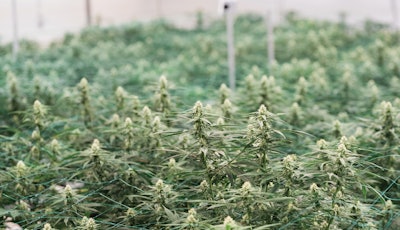
Guthrie: Solstice is a three-time Washington Grower of the Year winner. Why is that?
Cooley: It’s our commitment to transparency. It’s our commitment to furthering things. It’s our commitment to making products that we like. It’s our stewardship with the industry and searching out new genetics. It’s working in partnership with other breeders and growers.
Salinger: We’re all here because we all have some sort of affinity to cannabis. For me, it’s making cannabis a generally accepted agronomic crop. For Alex, he’s got a different reason, and for everybody else here, they’ve got a different reason why they want to be here. But collectively, we all have a passion for cannabis and a passion for this industry.
Guthrie: Has Washington’s product oversupply caused Solstice to rethink which strains it grows and when, perhaps forcing you to not grow strains you enjoy?
Salinger: Most of the time, if it’s a strain that we like, it’s going to do well on the market. But we can’t rely on that. In order to make sure that the strain is going to move, I’ll often grow things that I don’t necessarily like.
For example, personally, even the best, most well-manicured, perfectly-grown Durban Poison, I just don’t like it. But I’m not every consumer in the state. So, it’s getting that feedback from sales and understanding what heritage strains, regardless of what brand it goes into or how it’s grown, will have some trajectory, and then making sure that we’re matching those market demands.
Guthrie: You are currently expanding your indoor facility. What will this expansion add to the facility?
Salinger: We’re adding an additional three flowering rooms and some additional vegetative rooms. We are building that all out to continue hitting that premium indoor flower market and really start to look at other types of lighting, other areas where we can create value. We’ve got the space, we’ve got the warehouse already established, we’ve got the staff and we’ve got the people trained.
Cooley: We’re about to finish this second phase. Once that’s up and running, we may explore going to a farm. We do believe, ultimately, high-quality cannabis ends up in a greenhouse. We will eventually build one of those, but it’s not necessary at this point.

